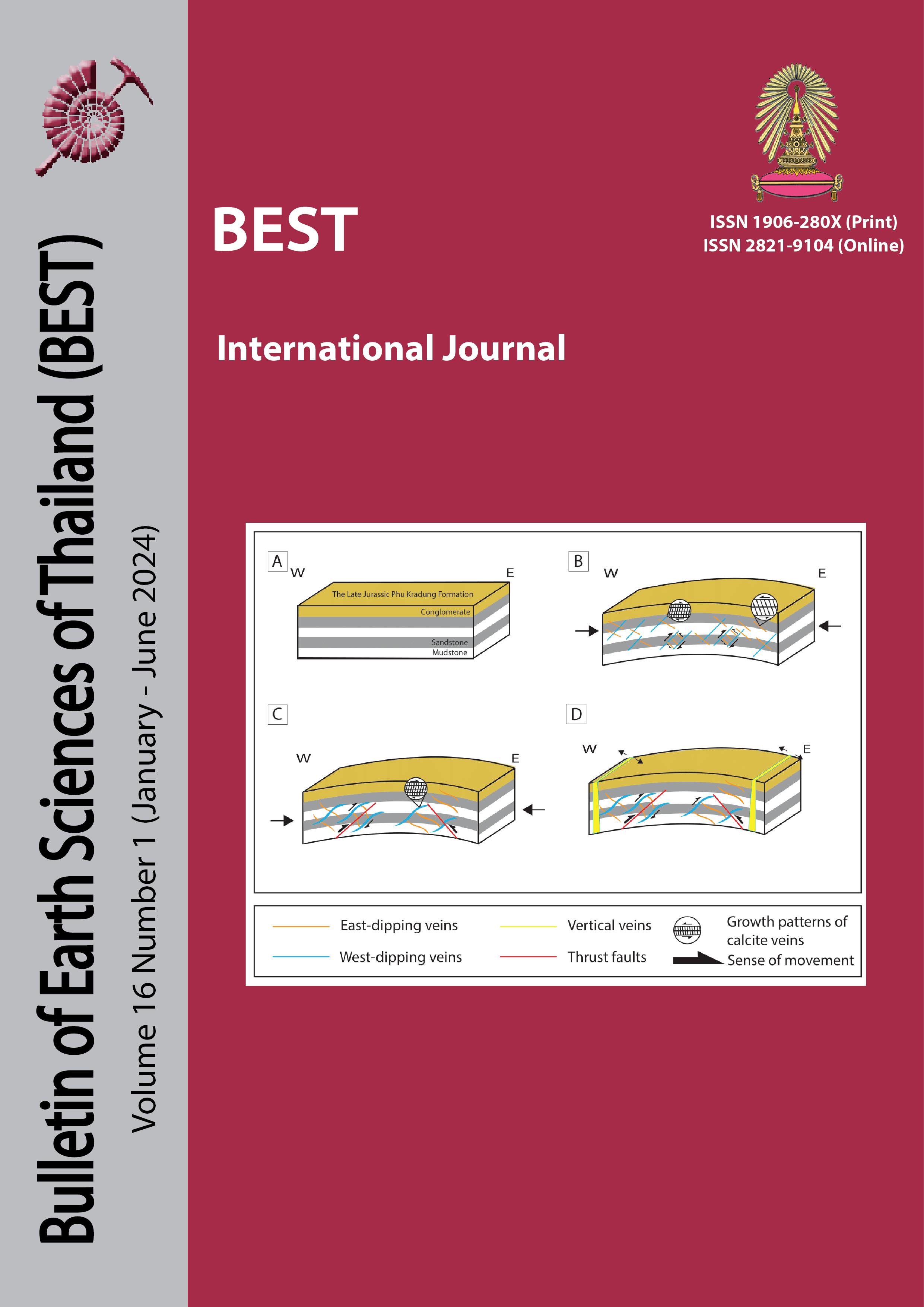Susceptibility Investigation of Debris Flow Using Topographic Index in the Uttaradit Province
Main Article Content
Abstract
Uttaradit Province, situated in Thailand's lower northern region, faces significant risks from geohazards such as debris flows, landslides, and flooding. These hazards pose a serious threat to both people and property. The area's susceptibility to debris flows is influenced by several topographic factors, including steep mountain slopes and numerous mountain-front outlets. In this study, we used the Frequency Ratio (FR) method to identify and map areas susceptible to debris flows in Uttaradit Province. We analyzed topographic indices related to debris flow activity using terrain data derived from a 12.5-meter resolution Digital Elevation Model (DEM). The FR was calculated using ten parameters indicative of areas vulnerable to debris flows. These parameters included: i) Distance to road, ii) Plan curvature, iii) Terrain ruggedness index, iv) Profile curvature, v) Slope, vi) Melton ruggedness number, vii) Topographic wetness index, viii) Stream power index, ix) Elevation, x) Lithology. The results allowed us to categorize the debris flow susceptibility in Uttaradit Province into five levels. Areas with high and very high susceptibility were mainly located in the plains of the southwest and the Khao Phi Pan Nam region. In contrast, the northeastern, northwestern, and northern parts of the province were identified as having medium and low susceptibility.
Article Details

This work is licensed under a Creative Commons Attribution-NonCommercial-NoDerivatives 4.0 International License.
Copyright © 2008 Department of Geology, Faculty of Science, Chulalongkorn University. Parts of an article can be photocopied or reproduced without prior written permission from the author(s), but due acknowledgments should be stated or cited accordingly.


